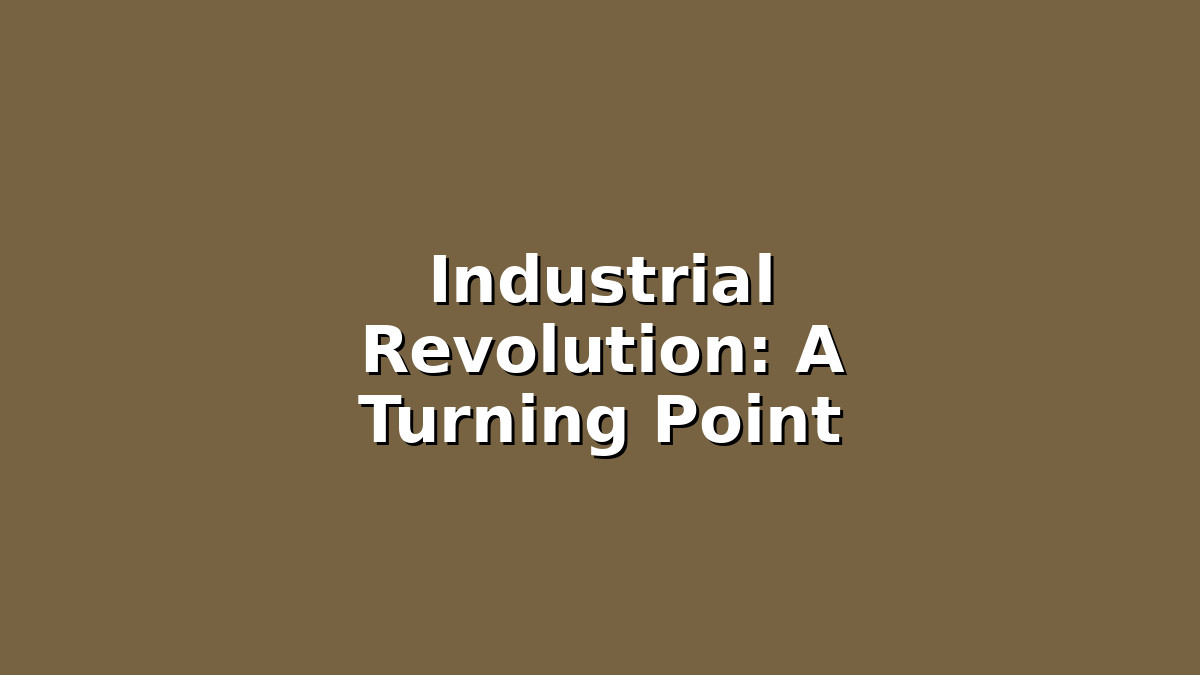The Industrial Revolution is one of the most important events in human history. It marked a major turning point that changed the way people lived, worked, and thought about the world. For students preparing for exams or looking to deepen their understanding, studying the Industrial Revolution can sometimes feel overwhelming due to the many inventions, social changes, and economic impacts involved. However, with the right approach and study techniques, you can master this topic efficiently and confidently.
In this article, we’ll explore the Industrial Revolution in detail, breaking it down into manageable sections. Along the way, I’ll share practical study tips designed to help you retain key information and prepare effectively for your exams. Whether you’re studying history, social studies, or economics, these insights will help you see why the Industrial Revolution truly was a pivotal moment in global history.
Understanding the Industrial Revolution: The Basics
The Industrial Revolution began in the late 18th century, primarily in Britain, and eventually spread across Europe, North America, and beyond. This period was marked by a shift from manual labor and agrarian economies to machine-based manufacturing and industrial economies. Key inventions like the steam engine, spinning jenny, and power loom revolutionized production methods, enabling mass production and increased efficiency.
For students, it’s important to grasp the fundamental causes and effects of the Industrial Revolution. Causes include:
– Advances in technology and machinery
– Access to raw materials, especially coal and iron
– A growing population and urban workforce
– Capital and investment for new enterprises
– Political stability and supportive government policies
Effects were wide-ranging:
– Rapid urbanization as people moved to cities for factory jobs
– Changes in social structures, including the rise of a new middle class
– Environmental changes due to industrial pollution
– Improvements in transportation, like railways and canals
– Shifts in labor, including the rise of wage labor and early labor movements
Study Tip #1: Create a Cause-and-Effect Chart
To avoid information overload, try making a simple chart or mind map that lists causes on one side and effects on the other. This visual aid helps you link events logically and recall them better during your exam.
Diving Deeper: Key Inventions and Their Impact
One of the most fascinating aspects of the Industrial Revolution is the slew of groundbreaking inventions that fueled rapid industrial growth. Learning these inventions and understanding their significance will boost your confidence and exam readiness.
– The Steam Engine (James Watt): Powered machinery and locomotives, enabling factories to be located away from water sources.
– Spinning Jenny (James Hargreaves): Revolutionized textile production by allowing one worker to spin multiple spools of thread at once.
– Power Loom (Edmund Cartwright): Automated weaving, dramatically increasing fabric production.
– The Cotton Gin (Eli Whitney): Simplified cotton processing, boosting raw material supply for textile factories.
These inventions not only boosted productivity but also changed daily life and global trade patterns.
Study Tip #2: Use Flashcards for Inventions and Inventors
Make flashcards with the name of the invention on one side and its inventor, purpose, and impact on the other. Regularly quizzing yourself or studying with a peer can make these facts stick.
Social Changes and Challenges During the Industrial Revolution
The Industrial Revolution wasn’t just about machines and production; it also deeply affected societies. Understanding these social changes will help you write balanced, insightful answers on exams.
– Urbanization and Living Conditions: Cities grew rapidly but often without proper sanitation or housing, leading to overcrowded slums.
– Working Conditions: Factory jobs were often dangerous and poorly paid, with long hours and child labor common.
– Rise of the Middle Class: Industrial entrepreneurs and professionals formed a new social class with different values and lifestyles.
– Labor Movements: In response to harsh conditions, workers began organizing strikes and demanding rights, leading to early labor reforms.
– Education and Reform: The period saw gradual improvements in education and social welfare, as governments and activists pushed for change.
Study Tip #3: Practice Writing Short Essays on Social Impacts
Try writing brief essays or paragraph answers focusing on how the Industrial Revolution affected workers, families, and cities. This practice improves your analytical skills and helps prepare you for exam questions that require explanation and opinion.
Conclusion
The Industrial Revolution truly was a turning point that reshaped the modern world. While it brought technological marvels and economic growth, it also introduced new social challenges and inequalities. For students, mastering this topic is not only about memorizing facts but also understanding the broader impact on society and history.
By breaking down the Industrial Revolution into causes and effects, key inventions, and social changes—and by using study aids like charts, flashcards, and essay writing—you’ll be well-prepared for your exams. Remember, consistent study and active engagement with the material are your best tools for success. Keep a positive mindset, and don’t hesitate to revisit difficult topics multiple times. With effort and the right strategies, you can conquer the Industrial Revolution and make it one of your strengths in your studies.
Good luck, and happy studying!

Responses